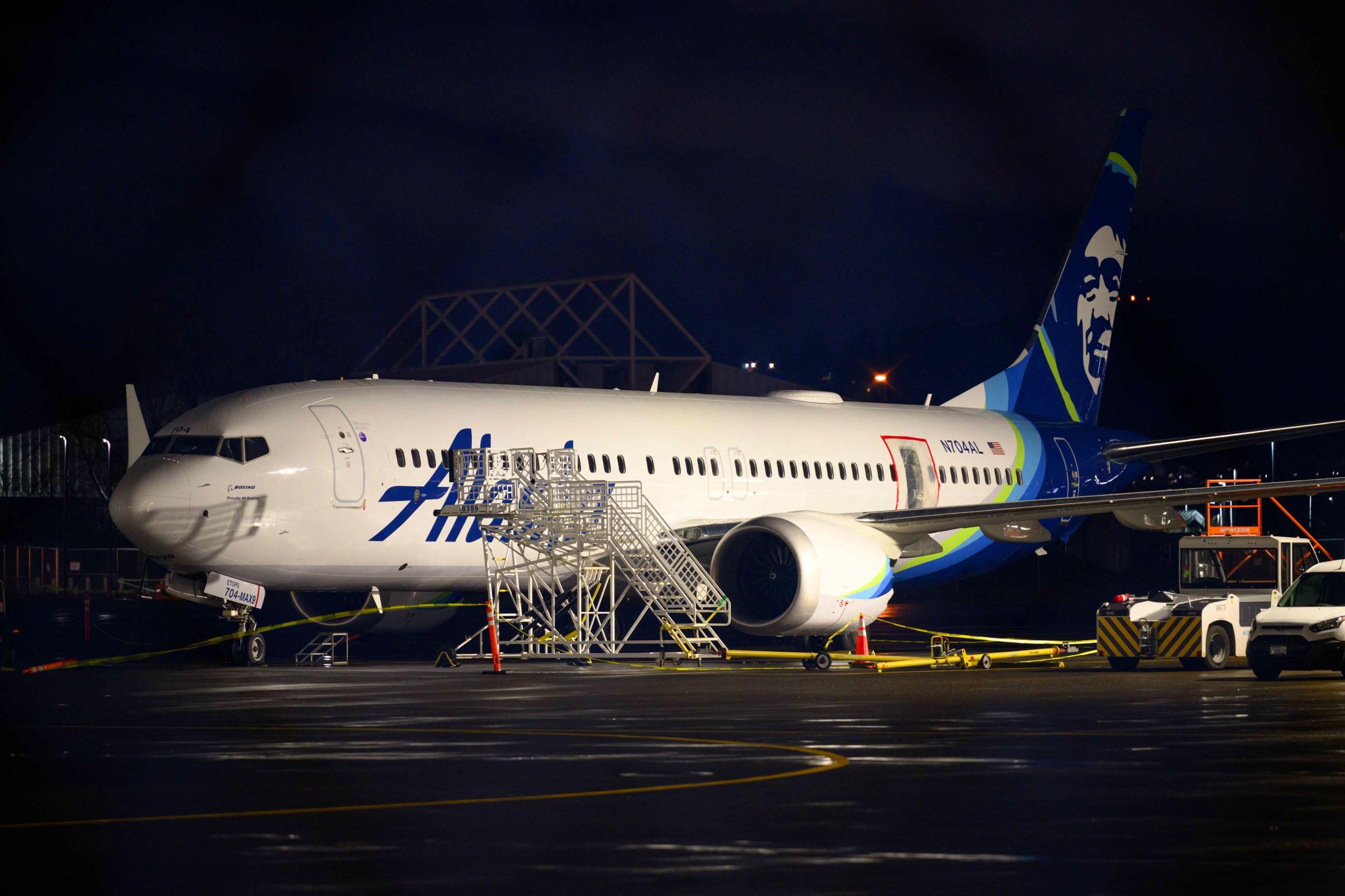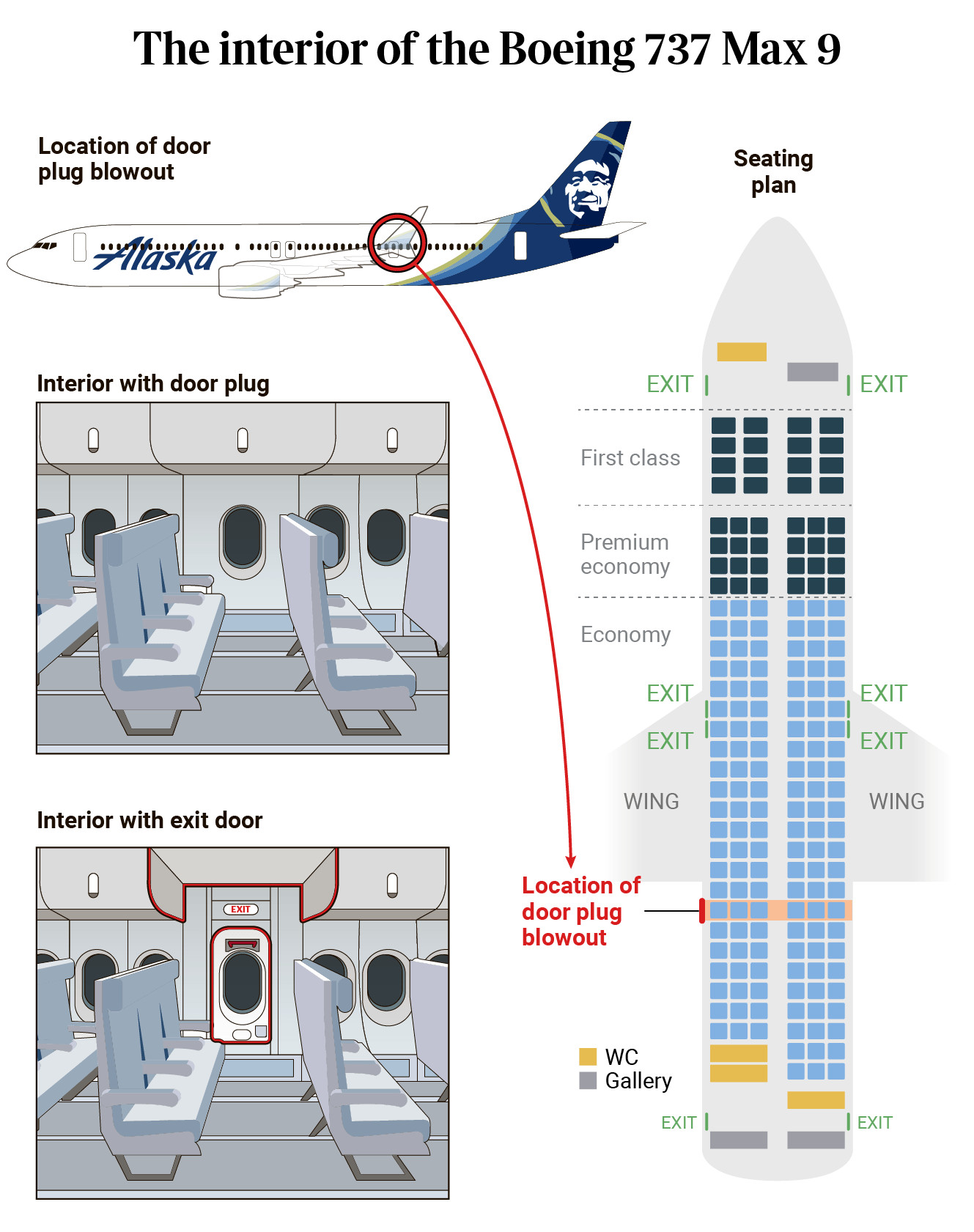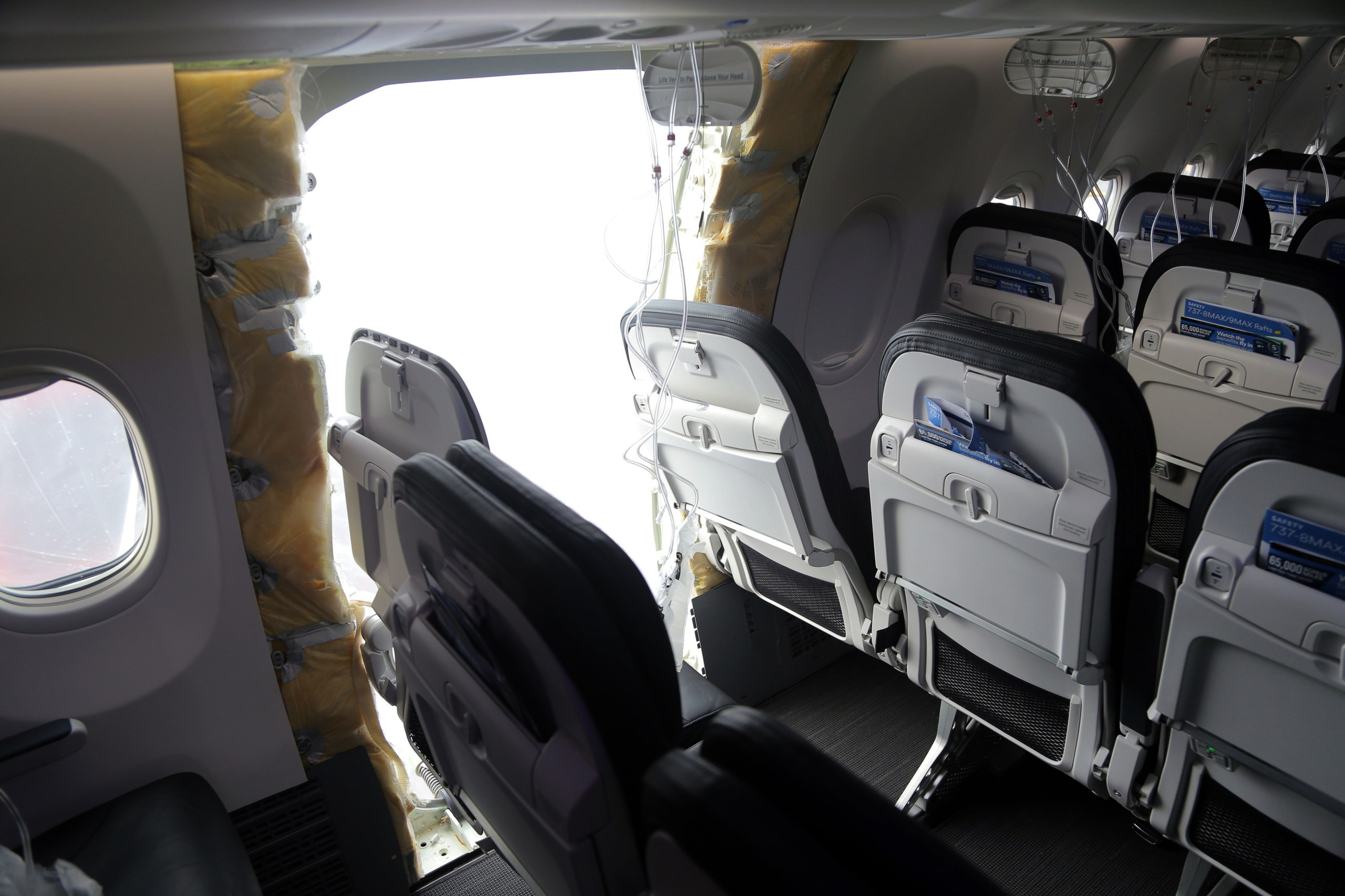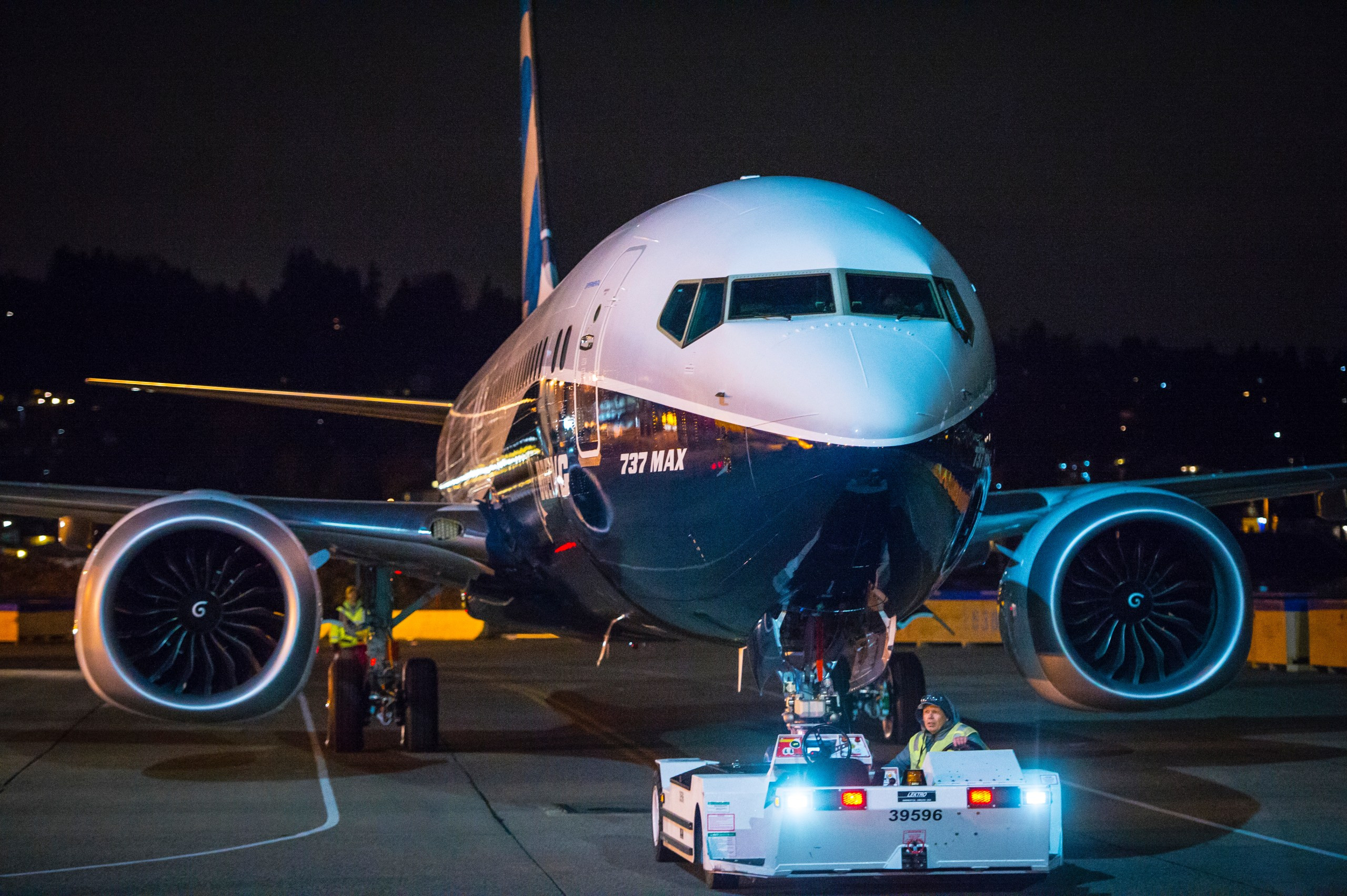The Boeing 737 MAX 8 safety is a primary concern for passengers, airlines, and aviation professionals alike, especially after the tragic accidents in 2018 and 2019. At flyermedia.net, we delve into the facts, investigations, and updates to provide you with a comprehensive understanding. This article will explore the safety improvements and certifications, offering insights into the current status of the Boeing 737 MAX 8, addressing whether it’s safe for air travel.
Table of Contents
- Boeing 737 MAX 8: A Timeline of Events
- What Caused the Boeing 737 MAX 8 Grounding?
- MCAS: The Central Issue Explained
- Safety Enhancements and Recertification
- Airline and Regulatory Perspectives on Safety
- Passenger Concerns and Airline Transparency
- Boeing’s Response to Safety Issues
- Pilot Training and Simulation Advancements
- Independent Safety Assessments and Audits
- Future of the Boeing 737 MAX 8 and Aviation Safety
- FAQ: Addressing Your Concerns About the Boeing 737 MAX 8
1. Boeing 737 MAX 8: A Timeline of Events
The Boeing 737 MAX 8 has faced intense scrutiny since its introduction, marked by significant incidents and subsequent actions. Understanding the timeline of events is crucial for evaluating its safety.
- May 2017: The Boeing 737 MAX 8 enters commercial service.
- October 2018: Lion Air Flight 610 crashes into the Java Sea shortly after takeoff, killing all 189 people on board.
- March 2019: Ethiopian Airlines Flight 302 crashes shortly after takeoff, killing all 157 people on board.
- March 2019: Global regulators ground the Boeing 737 MAX fleet worldwide.
- November 2020: The FAA (Federal Aviation Administration) lifts the grounding order for the Boeing 737 MAX in the United States after software updates and revised pilot training protocols.
- January 2021: EASA (European Union Aviation Safety Agency) approves the return to service of the Boeing 737 MAX in Europe.
- 2021-Present: Gradual return to service of the Boeing 737 MAX by airlines worldwide, accompanied by ongoing monitoring and safety checks.
- January 5, 2024: Alaska Airlines Flight 1282 experiences a mid-air door plug blowout on a Boeing 737-9 MAX, leading to further scrutiny and temporary grounding of certain MAX 9 aircraft.
- December 2024: A Jeju Air Boeing 737-800 crashes at Muan International Airport in South Korea, resulting in fatalities and prompting safety inspections of Boeing 737-800 aircraft.
2. What Caused the Boeing 737 MAX 8 Grounding?
The Boeing 737 MAX 8 was grounded due to two fatal crashes within a short period, raising serious questions about the aircraft’s safety and design.
- Lion Air Flight 610 (October 2018): Crashed shortly after takeoff from Jakarta, Indonesia, killing all 189 passengers and crew.
- Ethiopian Airlines Flight 302 (March 2019): Crashed shortly after takeoff from Addis Ababa, Ethiopia, killing all 157 passengers and crew.
The primary cause identified was a faulty sensor providing incorrect data to the Maneuvering Characteristics Augmentation System (MCAS), an automated flight control system. This led to the MCAS repeatedly forcing the aircraft’s nose down, overwhelming the pilots’ attempts to regain control.
3. MCAS: The Central Issue Explained
The Maneuvering Characteristics Augmentation System (MCAS) is an automated flight control system implemented on the Boeing 737 MAX series to compensate for the aircraft’s altered aerodynamic characteristics due to larger engines.
- Purpose: MCAS was designed to prevent the aircraft from stalling by automatically pushing the nose down when it detected a high angle of attack.
- Functionality: The system relied on input from a single angle of attack (AOA) sensor. If this sensor provided incorrect data, the MCAS could be activated erroneously.
- Issues: In the Lion Air and Ethiopian Airlines crashes, a faulty AOA sensor triggered the MCAS, repeatedly pushing the aircraft’s nose down. Pilots struggled to counteract the system, leading to loss of control and ultimately, the crashes.
- Modifications: Following the accidents, Boeing redesigned the MCAS to use input from two AOA sensors, making it less likely to be triggered by a single faulty sensor. The updated system also provides pilots with greater control to override the MCAS if necessary.
4. Safety Enhancements and Recertification
Following the grounding, significant safety enhancements and a rigorous recertification process were undertaken to ensure the Boeing 737 MAX 8 met the highest safety standards.
- MCAS Redesign:
- Utilizes data from both angle of attack (AOA) sensors instead of one.
- Activates only if both AOA sensors agree that there is a high angle of attack.
- Provides pilots with the ability to override the system and maintain control of the aircraft.
- Pilot Training Enhancements:
- Mandatory simulator training for all 737 MAX pilots to familiarize them with the MCAS and emergency procedures.
- Enhanced training materials and flight crew operations manuals.
- Software Updates:
- Comprehensive software updates to the flight control system to prevent erroneous activation of MCAS.
- Improved alerting systems to provide pilots with clear and timely information about system malfunctions.
- FAA and Global Regulatory Review:
- Extensive review of the 737 MAX design and safety features by the FAA and other global aviation authorities.
- Numerous test flights and simulations to validate the safety enhancements.
- Recertification of the 737 MAX by regulatory agencies after thorough safety assessments.
5. Airline and Regulatory Perspectives on Safety
Airlines and regulatory bodies play a crucial role in ensuring the safety of the Boeing 737 MAX 8. Their perspectives provide valuable insights into the aircraft’s reliability and operational readiness.
- FAA (Federal Aviation Administration): The FAA conducted extensive reviews, tests, and simulations before lifting the grounding order. The agency continues to monitor the 737 MAX’s performance and safety through ongoing inspections and data analysis.
- EASA (European Union Aviation Safety Agency): EASA also performed independent assessments and mandated additional safety requirements before approving the 737 MAX’s return to service in Europe.
- Airlines: Major airlines have expressed confidence in the safety enhancements and have gradually reintegrated the 737 MAX into their fleets. They emphasize rigorous maintenance protocols and pilot training programs to ensure safe operations.
- IATA (International Air Transport Association): IATA supports the return to service of the 737 MAX, citing the extensive safety measures implemented and the importance of harmonized global standards.
6. Passenger Concerns and Airline Transparency
Addressing passenger concerns is paramount in restoring confidence in the Boeing 737 MAX 8. Airlines are implementing various measures to enhance transparency and provide passengers with the information they need.
- Transparency: Airlines are providing clear information about the aircraft type being used for specific flights, allowing passengers to make informed decisions.
- Flexibility: Some airlines offer flexible booking policies that allow passengers to change their flights if they are uncomfortable flying on a 737 MAX 8.
- Communication: Airlines are actively communicating with passengers about the safety enhancements and recertification process, addressing their concerns and providing reassurance.
- Education: Efforts are being made to educate the public about the changes made to the 737 MAX and the rigorous safety checks that have been implemented.
7. Boeing’s Response to Safety Issues
Boeing has taken significant steps to address the safety issues associated with the 737 MAX 8, focusing on design improvements, software updates, and enhanced training.
- Design Changes: Redesigning the MCAS to incorporate data from two AOA sensors, providing redundancy and preventing erroneous activation.
- Software Updates: Implementing comprehensive software updates to the flight control system to improve stability and prevent malfunctions.
- Training Programs: Developing enhanced pilot training programs, including simulator training, to ensure pilots are fully prepared to handle any potential issues.
- Accountability: Taking responsibility for the accidents and implementing organizational changes to improve safety oversight and accountability.
- Collaboration: Working closely with regulatory agencies, airlines, and industry stakeholders to ensure the highest safety standards are met.
8. Pilot Training and Simulation Advancements
Enhanced pilot training is a critical component of ensuring the safe operation of the Boeing 737 MAX 8. Advancements in simulation technology have played a significant role in preparing pilots for various scenarios.
- Simulator Training: Mandatory simulator training for all 737 MAX pilots, focusing on the MCAS and emergency procedures.
- Scenario-Based Training: Realistic scenario-based training to simulate potential malfunctions and challenges, allowing pilots to practice their responses in a safe environment.
- Continuous Training: Ongoing training and refresher courses to ensure pilots remain proficient in operating the 737 MAX and are up-to-date on the latest safety procedures.
- Advanced Simulation Technology: Utilizing advanced flight simulators that accurately replicate the flight characteristics of the 737 MAX, providing a realistic training experience.
- CRM (Crew Resource Management) Training: Emphasizing effective communication and teamwork among pilots to improve decision-making and enhance safety.
9. Independent Safety Assessments and Audits
Independent safety assessments and audits provide an additional layer of scrutiny and validation, helping to ensure the Boeing 737 MAX 8 meets the highest safety standards.
- Regulatory Audits: Regular audits by regulatory agencies, such as the FAA and EASA, to assess compliance with safety regulations and identify potential areas for improvement.
- Third-Party Reviews: Independent reviews by aviation safety experts and organizations to provide objective evaluations of the 737 MAX’s safety features and operational procedures.
- Airline Safety Audits: Airlines conduct their own internal safety audits and assessments to ensure their 737 MAX operations meet their own stringent safety standards.
- Data Analysis: Continuous monitoring and analysis of flight data to identify trends and potential safety issues, allowing for proactive intervention and corrective action.
- Transparency: Public disclosure of safety assessment findings to enhance transparency and build public confidence in the 737 MAX’s safety.
10. Future of the Boeing 737 MAX 8 and Aviation Safety
The future of the Boeing 737 MAX 8 and aviation safety depends on continuous improvement, vigilance, and a commitment to learning from past mistakes.
- Continuous Monitoring: Ongoing monitoring of the 737 MAX’s performance and safety through data analysis and regular inspections.
- Technological Advancements: Investing in new technologies to enhance flight safety, such as advanced sensor systems, automated flight control systems, and predictive maintenance tools.
- Safety Culture: Fostering a strong safety culture within aviation organizations, emphasizing open communication, transparency, and accountability.
- Regulatory Collaboration: Strengthening collaboration among regulatory agencies worldwide to harmonize safety standards and ensure consistent oversight.
- Public Engagement: Engaging with the public to address their concerns and provide clear, accurate information about aviation safety.
11. FAQ: Addressing Your Concerns About the Boeing 737 MAX 8
1. Is the Boeing 737 MAX 8 safe to fly now?
Yes, the Boeing 737 MAX 8 is considered safe to fly after undergoing extensive safety enhancements, software updates, and rigorous recertification by global aviation authorities such as the FAA and EASA.
2. What changes were made to the Boeing 737 MAX 8 after the grounding?
Key changes include a redesigned MCAS that now uses data from two angle of attack sensors, enhanced pilot training with mandatory simulator sessions, and comprehensive software updates to the flight control system.
3. How does the redesigned MCAS improve safety?
The redesigned MCAS now activates only if both AOA sensors agree on a high angle of attack, reducing the risk of erroneous activation. Pilots also have greater control to override the system if necessary.
4. What kind of training do pilots receive for the Boeing 737 MAX 8?
Pilots receive mandatory simulator training to familiarize them with the MCAS and emergency procedures, along with enhanced training materials and flight crew operations manuals.
5. How can I find out if my flight is on a Boeing 737 MAX 8?
Airlines often specify the aircraft type when you book or issue your ticket. You can also use websites like FlightRadar24, SeatGuru, or FlightAware to look it up using the departure and destination details or flight number.
6. What if I am uncomfortable flying on a Boeing 737 MAX 8?
Some airlines offer flexible booking policies that allow passengers to change their flights if they are uncomfortable flying on a 737 MAX 8. It’s best to check with your airline for specific options.
7. How are regulatory agencies ensuring the ongoing safety of the Boeing 737 MAX 8?
Regulatory agencies like the FAA and EASA conduct regular audits, monitor flight data, and perform ongoing inspections to ensure compliance with safety regulations and identify potential areas for improvement.
8. What is Boeing doing to address safety concerns?
Boeing has taken significant steps to address safety issues, including redesigning the MCAS, implementing software updates, enhancing training programs, and improving safety oversight and accountability.
9. Are there independent safety assessments of the Boeing 737 MAX 8?
Yes, independent reviews by aviation safety experts and organizations provide objective evaluations of the 737 MAX’s safety features and operational procedures, adding an extra layer of scrutiny.
10. What is the future outlook for the Boeing 737 MAX 8 in terms of safety?
The future outlook depends on continuous monitoring, technological advancements, fostering a strong safety culture within aviation organizations, and strengthening collaboration among regulatory agencies worldwide to maintain the highest safety standards.
Addressing concerns about the Boeing 737 MAX 8 requires clear information and a commitment to safety. Visit flyermedia.net to explore training opportunities, stay updated on aviation news, and discover career options in the aviation sector. Your journey towards the skies starts here.
 Boeing 737 MAX Production
Boeing 737 MAX Production
 Jeju Air Boeing 737-800
Jeju Air Boeing 737-800
 Boeing 737 MAX 9 Interior Diagram
Boeing 737 MAX 9 Interior Diagram
 Boeing 737 MAX 9 Door Plug
Boeing 737 MAX 9 Door Plug
 Lion Air Flight 610 Memorial
Lion Air Flight 610 Memorial
 Boeing 737 MAX Aircraft Type
Boeing 737 MAX Aircraft Type
